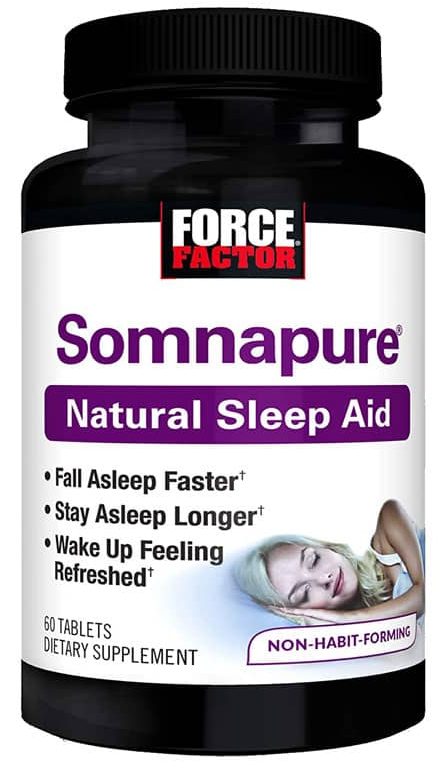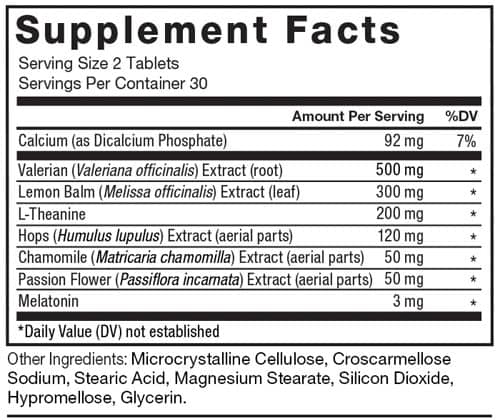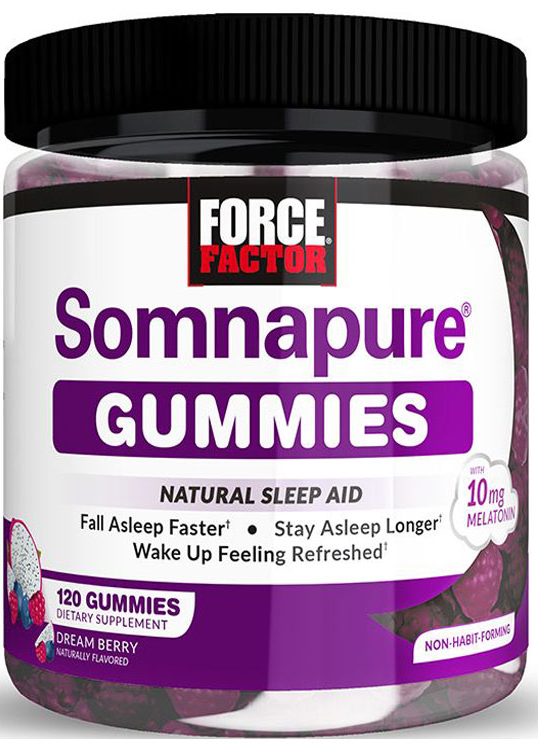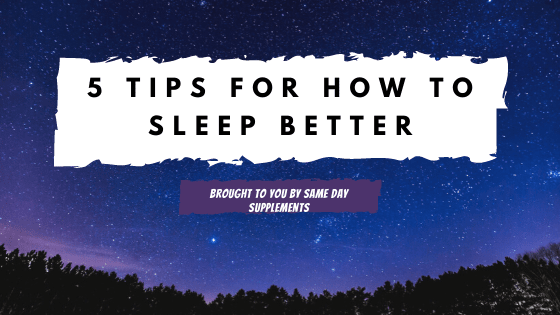5 Tips For How To Sleep Better
5 Tips For How To Sleep Better
A good night’s rest could seriously impact your mental and physical health in a positive way. Likewise when you’re struggling to fall asleep, it could ruin your day before it’s even started. Yet most of us aren’t sleeping enough or getting the quality of sleep we need. Today we’ll be covering how to sleep better and what lack of sleep can result in.
What Does Poor Sleep Look Like
Believe it or not, but sleep quality is not entirely correlated with quantity. Therefore, sleeping more doesn’t necessarily mean you’re sleeping well and sleeping less doesn’t mean you slept poorly.
The perception of sleep quality is often described in 4 general parameters: (1)
- How Easily You Fall Asleep
- Maintenance
- Total Time
- Awakening
Within these parameters, poor sleep can look like the following: (2)
- Taking more than 30 minutes to fall asleep after getting into bed.
- Being diagnosed with insomnia or another related disorder.
- Frequently waking up throughout the night.
- Staying up for a duration of 20 minutes or longer after waking in the middle of sleep.
- Spending less than 85% of your time in bed asleep.
Conditions That Affect Sleep (3)
Under normal conditions, our bodies have 2 systems that allow us to sleep and stay alert when we need to. Researchers often refer to the drive for sleep as a homeostatic system. Similar to other homeostatic systems in the body, this process is regulated internally.
For example, when body temperature drops, our blood vessels constrict and we shiver. In regards to sleep, when we stay awake for a long period of time, brain structures promote sleep drive.
And like other homeostatic systems, there are factors that can strengthen or weaken this drive. Research indicates that the duration and depth of our sleep on previous nights can influence the quantity and quality of sleep we have presently.
However, it is stated that every hour awake can strengthen the drive for sleep. Consequently, having a strong sleep drive doesn’t always mediate good quality sleep. This is easily understood by individuals diagnosed with insomnia.
As we mentioned, there are two systems that contribute to our sleep-wake schedule. The other system is referred to as the circadian system or rhythms. This system regulates our biological clock. Within this system, we generally tend to maintain a steady-state of alertness over the course of a 16-hour day. Additionally, our biological clock, under normal conditions, is synchronized to the sleep/wake cycle.
So similarly to the homeostatic system, every hour awake, signals an increase in our clock’s alerting system. This force is opposing our sleep drive and it’s only when our biological clock’s alerting signal diminishes that our sleep drive is able to overcome this force; allowing us to sleep.
Circadian Rhythm
As we covered in our Weight Loss Guide, the biological clock is linked to feeding times. So it shouldn’t come as a surprise that unhealthy eating habits can disturb this cycle. And this correlation was supported in a study published in 2020. The findings of this study suggest that unhealthy dietary patterns likely contribute to the relationship between poor sleep quality and increased risk for cardiovascular disease. (4)
However, the circadian rhythm also responds to light and darkness. This explains why we tend to be more wakeful during the day time and begin to feel fatigued when the sun is setting. But it’s not just sunlight that can influence our biological clocks. Light from electronic devices at night can confuse our biological clocks.
In this scenario, working on an electronic device or using electronic devices while attempting to go to sleep may increase your circadian rhythm’s alerting signals. Preventing the homeostatic system to overcome the alerts and may lead to poor sleep. (5)
Other factors affecting the circadian rhythm can include mutations or changes in genes that affect our biological clocks, jet-lag or alterations in your work schedule that affect the light-dark cycle. (6)
Afternoon Naps
Despite the general synchronization of both systems, there can be a period within your day where you feel groggy and fatigued. Consider situations where after an afternoon meeting or class you feel especially tired. This brief variation in alertness can be attributed to a lull in the strength of our alerting system. Consequently, our sleep drive is still increasing and may overcome the alerting system. As a result, cat-naps can become part of your routine.
As you can imagine, long periods of napping in late in the afternoon can also result in disturbances at night. Namely, it may affect your ability to fall asleep at night. This is not likely to occur when napping early to mid-afternoon and restricting your naps to around 10-20 minutes. However, naps in general may reduce sleep drive. (7)
During times when you need a boost in alertness and wakefulness, a brief daytime nap may improve an imbalance in your homeostatic and circadian systems. These “recovery naps” in addition to improving wakefulness, can also improve cognitive function. One indicating factor for successful recovery naps involves understanding sleep architecture otherwise known as sleep cycle. (8)
Without understanding the sleep cycle, napping may backfire.
For example, some people upon waking from a nap may feel groggy and disoriented also known as sleep inertia. Which is the result of sudden awakening during REM sleep. Sometimes when waking from a nap (or awakening from sleep in general) we awake while there are high levels of melatonin still in our system, this can cause sleepiness and even confusion. (9)
Unlike regular drowsiness, sleep inertia can impact cognition more intensely. Although difficulty upon awakening is generally noted similarly between men and women, there is a larger portion of reported daily occurrences within adolescents. Yet, confusion upon awakening may lessen with age. (10)
Sleep Architecture (11)
There are actually two basic types of sleep: rapid eye movement (REM) and non-rapid eye movement (NREM). When asleep, you cycled through all the stages of both types of sleep multiple times throughout the night. REM sleep consists of 4 stages, while NREM sleep involves only the first 3 stages.
In stage 1, you enter NREM sleep. This initial period lasts only several minutes and consists of light sleep. In which your heartbeat, breathing, and eye movements slow, and your muscles relax with occasional twitches.
Stage 2 is another period of light sleeping. Your heartbeat and breathing slow further and your muscles become more relaxed. In this stage, your body temperature also begins to drop and your eye movements stop. This stage is where most of our repeated sleep cycle is spent.
While in stage 3, you enter NREM deep sleep. This stage is crucial for feeling refreshed when waking. Time spent in this stage varies, with generally longer periods during the first half of your night. At this point, your heartbeat and breathing reach its slowest rate and your muscles are relaxed.
The final stage before the cycle repeats is REM sleep. In this stage, your eyes move rapidly from side to side behind your closed lids. Your heart rate and blood pressure increase to levels near waking rates. And your breathing becomes faster and irregular. This is also the stage in sleep where most dreaming occurs. At this stage your arm and leg muscles become temporarily paralyzed, this prevents you from acting out dreams. A reduction in the duration in REM sleep has been associated with aging.
Going through the stages:
While you are going through the various stages in the sleep cycle, different brain structures are active and playing important roles with sleep, metabolism, and learning and memory. Some important structures include the suprachiasmatic nucleus (SCN), brain stem, thalamus, pineal gland, basal forebrain, and amygdala.
Of these structures the SCN and pineal gland play vital roles promoting sleep. The SCN receives information about light exposure directly from the eyes and controls your behavioral rhythm. While the pineal gland receives signals from the SCN and increases production of the hormone melatonin, which helps put you to sleep once the lights go down. This is an important factor when looking into factors influencing sleep.
Specialized cells in your retinas process light and send these signals to the brain, indicating whether it is day or night. This can either advance or delay your sleep/wake cycle.
Naturally, those who work throughout the night often struggle falling asleep due to the disruption of their circadian rhythm. Additionally traveling to different time zones and jet-lag can also influence your circadian rhythm to become out of sync with your internal clock.
What Happens When You Don’t Sleep Well (12)
When you’re not sleeping well at night, your body is impacted in multiple ways. Poor sleep, specifically sleep deprivation, is associated with increased cortisol (stress response hormone) and ghrelin (‘hungry’ hormone) levels and decreased leptin (hormone responsible inhibiting ghrelin). Additionally, having adequate sleep plays a crucial role in enhancing cognitive performance and memory retention.
Whereas poor quality sleep can result in daytime sleepiness and affect physical and cognitive health. This could result in an increased risk for diseases, weight gain, mood alterations, high blood pressure, loss of concentration, and more. Your body needs sleep to restore chemical balances, repair itself, form new memories, and lead a healthier life as a whole.
How To Improve:
As you can imagine there are a ton of ways to improve your sleep. But, some tips may not be beneficial for your specific struggles. So before we get into the tips, it’s important to understand why you are having sleep problems. This could be related to one of the conditions we mentioned earlier in this post or something personal to you. If the answer isn’t clear you may benefit from speaking to a sleep specialist or your normal primary care physician.
Please keep in mind, while some of the tips and supplements mentioned in this post may be beneficial for aiding in your sleep quality and quantity, they may not replace proper treatment or protocols prescribed to you by a physician.
With all that cleared away, let’s dive into the tips!
Tip 1: Your Environment (13)
By environment, we mean wherever you spend most of your time sleeping. Generally speaking this is your bedroom. But for individuals in smaller apartments or residential living spaces, your “bedroom” may be combined with several more active spaces in your home. The important thing is to make sure when it’s around your designated bedtime, the area you’ve indicated for sleep, is a “sleep-inducing” space.
This can be done through many ways. Firstly, and potentially one of the most important things for this tip, is a quality and comfortable mattress. This is a vital element to your quality of sleep as it provides the physical space for you to be comfortable and relax. As well as, provides the support needed for your spine to avoid aches and pains. Additionally, you want to look into ensuring your pillows are up to par for the same purposes.
Next, you can work on secondary elements that make your space more inviting and comfortable. That could include changing your bedding to sheets and blankets that provide you comfort for your preferred textures and temperatures.
Finally, you’ll want to consider the external elements that may be disturbing your relaxation. This could be noise or even the temperature in your space. Most research supports that sleeping in cooler rooms around 65 degrees is ideal. However, this can vary person to person. If you are struggling with noise, you can consider including a white noise machine or playlist to help drown out the abrasive sounds or even ear plugs.
Tip 2: Timing (13)
Your sleep schedule consists of the time you got to sleep, the time spent asleep, and your wake-up time. When you begin to adjust your schedule, it’s important to do so gradually. This way your body can get used to your new schedule. Believe it or not, the first step to adjusting your schedule is with adjusting your wake-up time.
Try to go wake up at the same time daily. It can be tempting to sleep in during the weekends, but doing so can cause jet-lag like symptoms for when you try to get back on track. You should also try to save napping for earlier in the afternoon and limiting it to 15- 20 minutes, as mentioned earlier in the post. Like how you wouldn’t want to spoil your dinner with late snacking, you want to avoid spoiling your natural sleep schedule.
Lastly, it’s important to allow enough time for quality sleep into your schedule. Meaning, if you’re aiming to get the recommended amount of sleep per night, you have to choose a time that allows that. All in all, you’ll have to work backwards, pick a wake-up time that makes sense for your daily routine; then pick a target bedtime.
Tip 3: Light (13)
There are several ways you can aid in your pre-sleep time routine all with adjusting your lights. First, you may want to increase the amount of natural sunlight you experience during the day. Doing so will help keep you awake during the day.
Then, during your pre-bed routine, you’ll want to start lowering your lights. By keeping your bedroom dark, melatonin secretion is increased. Thus making you more sleepy. But, as we mentioned previously, it’s not just natural lights or bedroom lights you need to be mindful of. You also need to begin disconnecting from your electronic devices.
Tip4: Activity (13)
Daily exercise has across-the-board benefits for your health. This includes promoting sleep. Regular exercise also improves the symptoms of insomnia and sleep apnea and increases the amount of time you spend in the deep, restorative stages of sleep. But when squeezing a workout into your routine, you will need to be mindful of the time. Exercising too close to bedtime become difficult for your body to effectively settle.
Tip 5: Supplementation
When thinking about supplements, there are things to avoid and things to consider. Firstly, you need to be aware of the amount of caffeine and other stimulants you consume and specifically when you’re consuming it. Avoiding caffeine in the afternoon and evening can help prevent deprivation. (13) But, there are some supplements that are available that can help you fall asleep and stay asleep.
Such as Somnapure from Force Factor- 60 tablets.

Somnapure features an ingredient list of 7 ingredients that can aid in promoting sleep.


Valerian is a herb that has been clinically identified as beneficial for promoting relaxation and sleep. This includes reducing the time it takes to sleep and improving overall sleep quality. Most studies fine Valerian to be effective when taken at dosages between 400mg-900mg. (14)
Similarly, Lemon balm extra may aid in soothing stress and relaxation. As well as relieve restlessness. For these purposes, the recommendation for lemon balm dosing is between 300mg-600mg. (15)
L-theanine is a popular supplement used to aid in relaxation without drowsiness. Because of this it is commonly used to aid in easing stress. While l-theanine may not reduce the time it takes you fall asleep directly, it may aid in promoting better quality sleep. L-theanine is generally used at dosages between 200mg-400mg. (16)
Hops extract, on the other hand, does promote a mildly sedative effect. And when combined with valerian, hops extract may be more beneficial for promoting better sleep and reducing anxiety. (17,18) Likewise, chamomile extract has mild sedative effects, but it also may promote better sleep and aid in anxiety. (19) Next is passion flower extract, which has been used to aid in reducing anxiety and improving insomnia. (20)
Our last ingredient in Somnapure is melatonin. Melatonin as we mentioned earlier is a hormone produced in the brain. For dietary supplements, however, it’s often produced synthetically. It can be beneficial for jet lag, improving your sleep-wake cycle, some related disorders, and anxiety. (21)
And if your interests are in just taking melatonin, you can check out Somnapure Gummies. This version of Somnapure only contains melatonin!

This concludes our tips on how to sleep better! Thank you for reading! And of course if you have any questions or have an idea for another post, you can send us an email here!
Disclaimer:
†The intention of the information provided is for reference only and we are in no way providing medical advice or instruction. The information provided in this post is based on anecdotal information and available studies/reviews. While it is our goal to maintain and display accurate information, we can’t guarantee it represents the latest formulation of the product or information. Therefore, if you have any concerns, please visit the manufacturer’s website. Also, the information above is not a representation of our views at Same Day Supplements. Rather, these are the views and information provided by manufacturers and users. Also, the Food and Drug Administration has not evaluated these statements. Finally, the intention of these products is not to diagnose, treat, cure or prevent any disease or illness.
